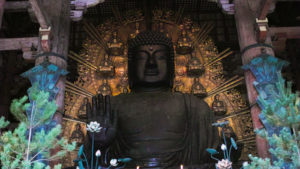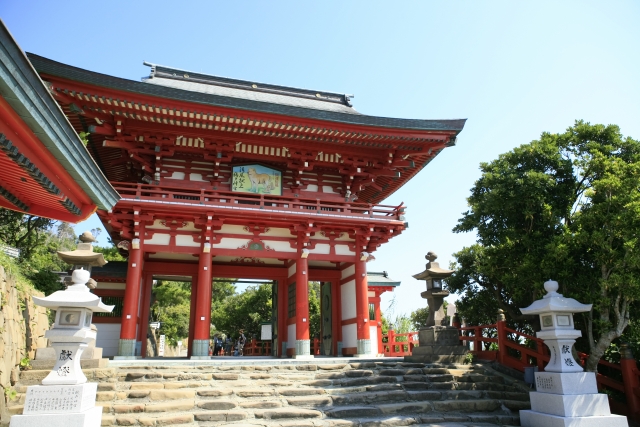神道/神社と仏教/寺の違いを説明しよう
Difference between Shinto-shrine and Buddhist-temple.
Today, most Japanese people observe both Buddhism and Shintoism, according to the occasion, without any conflict or contradiction between the two. Then let’s see what differences they have and how they are mixed up.
難易度★ 成り立ちを絡めた説明
Shintoism is the indigenous religion in Japan. Buddhism was founded in India and was introduced through China and Korea to Japan in the 6th century.
神道は日本古来の宗教です。
仏教はインドで生まれ、中国、韓国を経由し6世紀に日本に伝わりました。
The temple is used for Buddhism and the shrine is used for Shintoism.
寺は仏教で使われ、神社は神道で使われます。
難易度★★ 文化や様式と絡めた説明
Japanese worship sometime at the beginning of something in Shinto shrine. On the other hand we visit Buddhism temple at the end of something. For example, we take a baby for its first visit to a shrine when having a baby, and we have a funeral in Buddhist when people die.
日本人は、神社で物事の始まりを祈り。お寺では物事の終わりの時に尋ねます。
例えば、赤ちゃんが生まれた時神社でお宮参りをし、人が無くなった時は仏教の方法で葬式を行います。

難易度★★★ 歴史と絡めた説明
神仏習合
Although Shinto and Buddhist believers had some conflicts at first, they became more tolerant of each other with an interpretation that foreign-born Buddhist deities had transformed their appearances into Shinto deities. As a result, some temples enshrined Shinto deities, while some Shinto shrines added temples on their grounds.
神道と仏教の信者ははじめ対立していたものの、仏教の神が姿が神道の神に姿を変えているという解釈によって互いに寛容になりました。
その結果として、お寺の中に神道の神が祀られていたり、神社の境内にお寺が入ったりしています。
神仏分離令
The Meiji government issued the Act of Separation of Shinto from Buddhism in 1868 to give Shinto the status of a national religion. As the result, an excessive reaction to Buddhism occurred the abolition of Buddhism.
1868年に明治政府が神道を正式に国の宗教とし強めるために神仏分離令を出した。
その結果として、仏教に対して過度の弾圧により、廃仏毀釈が起こった。

